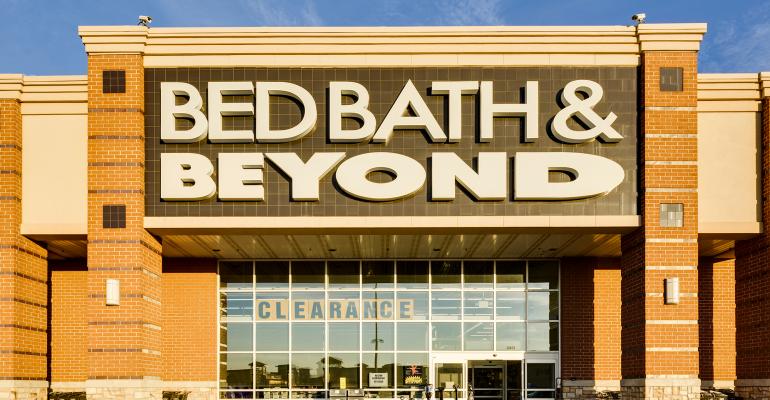(Bloomberg)—Bed Bath & Beyond Inc. plans to shrink its store base, closing 200 stores over the next two years in a bid to cut costs and weather one of retail’s most challenging periods yet.
The home goods retailer, which operates more than 950 of its namesake stores in the U.S. and Canada, declined to say how many jobs will be eliminated when it shutters about one-fifth of locations. It will try to place associates in surrounding stores when possible, and more details will be released in October, Chief Executive Officer Mark Tritton said in an interview.
“We definitely will be reducing down our overall store profile and therefore our headcount,” Tritton said.
Between the store closures and other restructuring moves along the supply chain, the company said it will eventually save between $250 million and $350 million a year, excluding one-time costs. The company, which has a total of 1,478 stores across its brands, said the 200 closures would be “mostly” Bed Bath & Beyond locations,
Shares fell in after-market trading, slipping as much as 8.3%.
The store closures come as the chain tries to navigate the coronavirus pandemic that has upended the entire retail sector. Like many peers, Bed Bath & Beyond has tried to scale down, build up its e-commerce business, negotiate with landlords and shore up liquidity where it can. In some cases Bed Bath & Beyond deferred rent payments for stores that went dark due to the pandemic shutdowns, Tritton said.
The impact of store closures, however, were significant. Net sales in the quarter that ended on May 30 fell 49%. During the closures, net sales from the company’s digital business rose 82%, accounting for about two-thirds of sales for the quarter, said the company, which also operates stores including Buy Buy Baby and Christmas Tree Shops.
The majority of Bed Bath & Beyond stores have now reopened and the company is continuing to monitor regions where the virus may flare up again. Tritton said he expects the full fleet to be open by next week. The digital business has remained strong even with the stores back.
“We’re really moving out of that phase and really moving into true life as we knew it with our stores open,” Tritton said. “We are strong in terms of our liquidity and we can now resume normal business in terms of our rent situation.”
During social distancing, consumers continue to turn to the retailer to help them spruce up their homes, Tritton said, purchasing nesting items like blenders and new bedding. Now the company is working through its back-to-college strategy, which has the challenge of a fractured U.S. school schedule. While it’s still in the early stages, Tritton said the company is seeing positive results. For example, by checking Pinterest, the company can see that consumers are thinking about setting up their dream dorm rooms.
“The back-to-college moment, while it’s starting a little later than prior years, it’s much stronger in terms of the customer response,” Tritton said. “We have higher customer engagement, higher purchases, higher conversions digitally and in stores, it’s off to a great start.”
To contact the reporter on this story: Jordyn Holman in New York at [email protected].
To contact the editors responsible for this story: Anne Riley Moffat at [email protected]
Richard Clough
© 2020 Bloomberg L.P.




